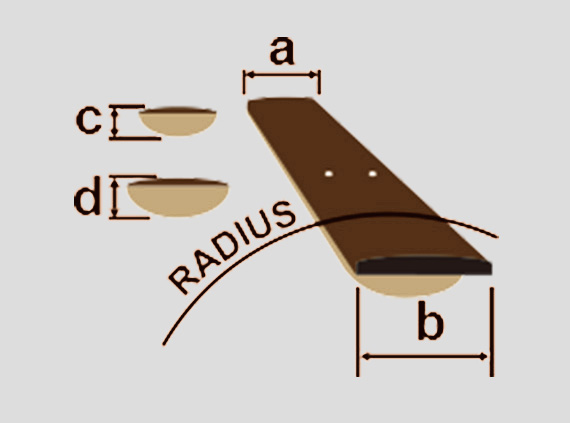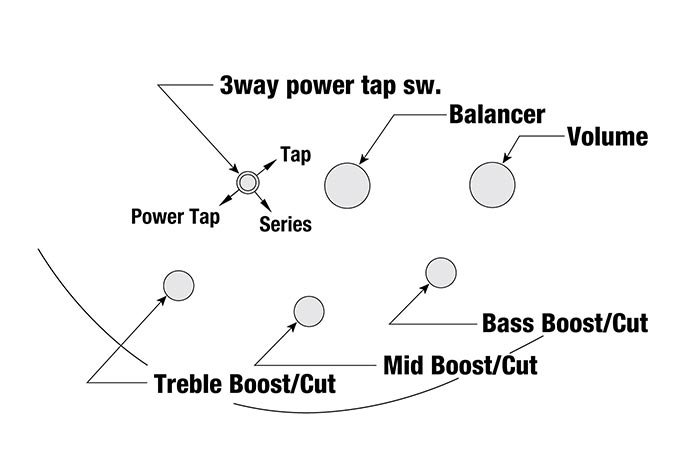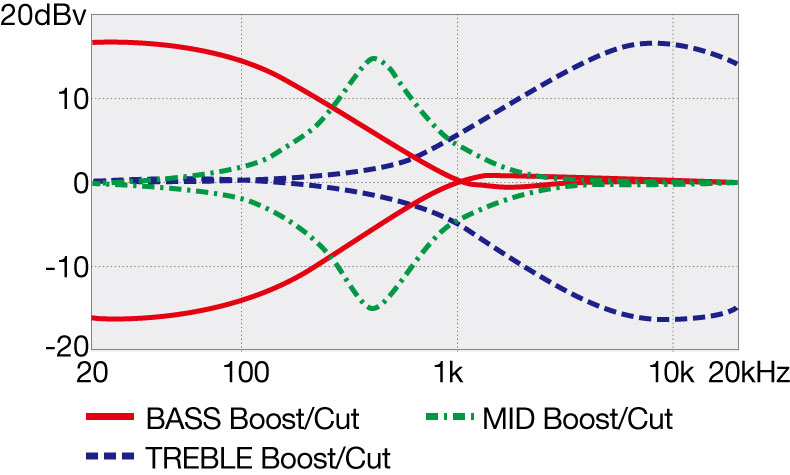

DESCRIPTION

DESCRIPTION
With the bass held in the playing position, there are three small knobs closest to the lower edge of the body. Directionally, from the lower bout towards the neck knobs are treble boost/cut, mid boost/cut, and bass boost/cut. There are two larger knobs above these, closer to the bridge. The knob closest to the neck controls volume, and the knob next to it is the pickup balancer control. There is a 3-way power tap switch next to the balancer knob. When the switch is in neck position, the humbuckers are tapped. When the switch is in center position, the humbuckers are in series. when the switch is in bridge position, the humbuckers are in power tap mode, which is tapped with additional low end added.

DESCRIPTION
The bass boost/cut frequency curve has a peak at 20 Hz, the variable width becomes smaller toward the high range, and the variable width becomes zero at about 1000 Hz. The variable range becomes slightly larger in the high range than around 1000 Hz, but it becomes zero again near 5000 Hz. The variable range of the peak frequency is approximately ±15 dB. The treble boost/cut frequency curve draws a mountain-shaped curve with a peak at around 10,000 Hz and zero variable range around 100 Hz. The variable range of the peak frequency is approximately ±15 dB. The mid-boost/cut frequency curve creates a bell-shaped curve with a peak around 450 Hz, and the variable width becomes zero near 20 Hz and around 10,000 Hz. The variable range of the peak frequency is approximately ±15 dB.